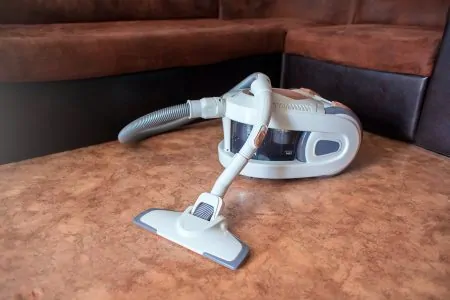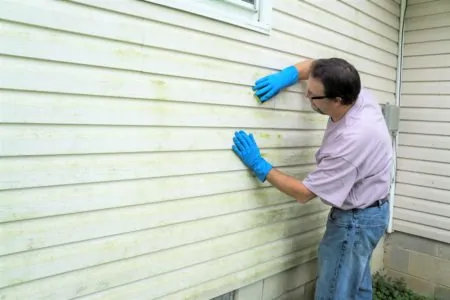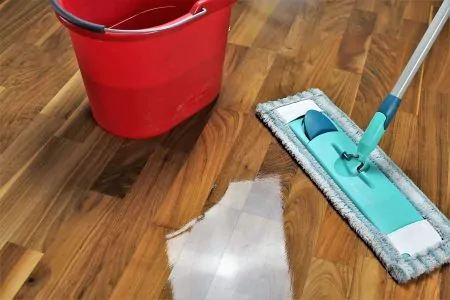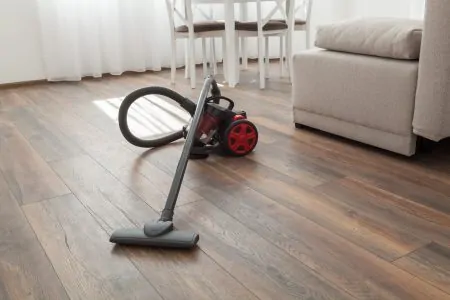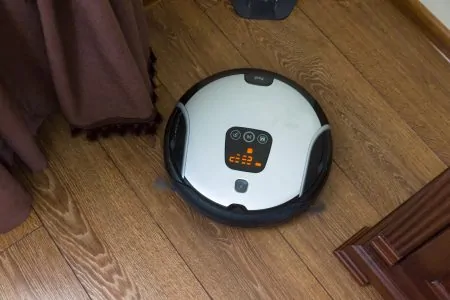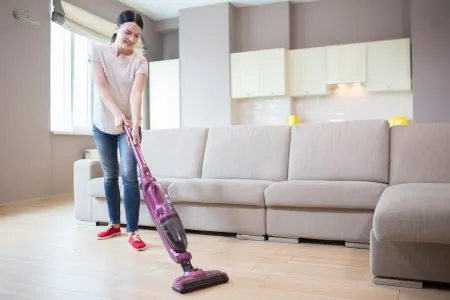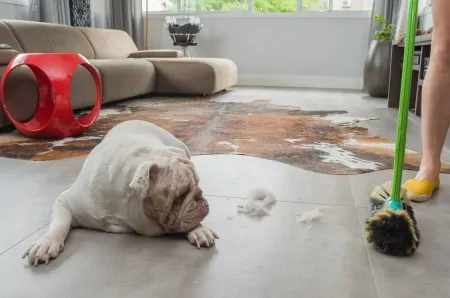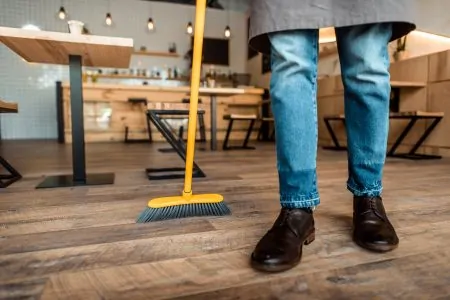Linoleum floors look amazing when they’re pristine. But if they’re damaged, they can ruin your entire home’s appearance. How do you prevent unsightly blemishes from cramping your style?
Proper cleaning and maintenance aren’t difficult to do. It will cost you little time and money and save you a world of frustration and effort in the long run. You don’t have to look far to gather your supplies — you might already have them at hand.
We’re showing you how to clean linoleum floors as effectively as possible. Take your pick of our suggestions, and see the results for yourself.
Key Takeaways
- Linoleum floors are durable, eco-friendly, and require easy maintenance.
- Use soft-bristle brooms, hard floor vacuums, and damp mops for regular cleaning.
- Avoid abrasive chemicals and excess water to prevent damage to linoleum.
- DIY cleaning solutions with vinegar, baking soda, and dish soap are effective and budget-friendly.
The Benefits of Linoleum Floors
Hardwood is much desired in design, but not everyone can afford it. Linoleum — a natural compound — looks just as stylish and is one of the best alternatives to genuine wood on the market. What’s funny, though, is that it was created by accident.
In 1855, its inventor, Frederick Walton, forgot to seal his linseed oil. When he returned to it, he discovered that a solid layer had formed on top of the oil. He peeled it off and, fascinated by its texture, began to think of ways this odd substance could be used (1).
Five years later, linoleum was patented, and the rest, as they say, is history. Currently, linoleum is a blend of linseed oil, cork, wood flour, and flax with added pigments. This mesh of materials is solidified and compressed onto canvas, making it a versatile floor cover.
Beyond style, there are a few notable advantages to linoleum. You’ve made the right choice in installing it, and here’s why:
1. It’s Durable
It’s a misconception that linoleum won’t last long. Because of its soft, almost elastic texture, it’s more resistant than wood and won’t develop blemishes or scratches as easily. To put it simply, linoleum will quite literally bounce back and retain its integrity better than hard floors.
Though the material itself won’t keep as long or as strong as hardwood, your linoleum floor could last for decades. It’s a huge benefit, considering that the initial costs of linoleum are smaller too.
2. It’s Eco-Friendly
Sometimes linoleum gets a bad wrap because it’s perceived as a synthetic material and therefore, unnatural. This couldn’t be further from the truth. Yes, some linoleum strips have synthetic or engineered materials added. But for the most part, it’s plant-based.
Even more impressive is that it’s 100 percent biodegradable. So once it’s run its course, it won’t impact the environment.
Linoleum is also free of harmful and toxic chemicals and won’t release volatile organic compounds (VOCs) into the air.
3. Easy Maintenance
Because of its structure, linoleum is not as demanding as hardwood. Most of the time, you won’t have to do much more than sweep or vacuum and mop. There’s no need to buy pricey specialized products or tools to keep your floors looking pristine.
There are various home solutions you can save money on, and the chances are that you’ve already got everything you need. Another advantage here is that because linoleum is so easy to take care of, preserving its lifespan — and saving even more money — is a breeze.
Tools and Supplies for Linoleum Maintenance
You’re spoiled for choice in how you want to clean your linoleum floors. Although maintenance is easy, there are still some preferred tools and formulas for preserving your floor’s condition. Here’s what we recommend:
Dusting and Mopping
- Brooms: The best brooms you can use for linoleum are ones with soft nylon bristles or even better, microfiber heads. Straw and stiff bristles are too rough for this type of floor.
- Vacuum cleaners: Vacuuming linoleum is important, but only with a hard floor vacuum. Brush rollers intended for carpets are too hard and will likely cause damage.
- Mops: Linoleum is susceptible to water damage because it traps moisture (2). So, use a mop bucket to wring out excess water. If you don’t have one, don’t use a soaked mop on your floor, and dry your linoleum as quickly as you can.
- Steam mops: Steam is an efficient way to remove tough dirt and grime from your floors. When choosing a steam mop, check manufacturer specs to ensure the product is suitable for linoleum. If it is, follow operation instructions exactly to avoid accidental heat damage.
Dry Cleaning Tools
Chemical Cleaners
Linoleum stands out from other hard floors because homemade solutions are preferred. It’s not necessary to buy pre-mixed cleaners for this flooring type. DIY blends are just as effective.
If you want to use commercial cleaners, ensure they are made for linoleum. It’s easy to confuse this type of flooring with vinyl, so pay attention to what you buy. Look out for pH-balanced products.
Keep in mind that abrasive formulas, like detergents, are not suitable for linoleum. To be safe it’s best to avoid using your other household cleaning products (like carpet shampoo or tile cleaner).
Homemade Linoleum Floor Polish
Why not save yourself a trip to the store, and make your own DIY floor cleaner? Vinegar, baking soda, dishwashing liquid, baby oil, and good old water will go a long way (3).
There are many advantages to cleaning your floor this way. For one, you don’t have to use toxic chemicals that could impact your health and the environment. DIY solutions will save you money, and they’re safer to store.
They’re just as effective as chemical cleaners with much less fuss. Here are three recipes you can try for yourself.
- Baking Soda Paste: For this easy mixture, combine vinegar and baking soda into a thick paste. Don’t use this on your entire floor, but rather spot cleaning stubborn stains.
- Vinegar, Dish Soap, and Baking Soda: Add a quarter cup of baking soda to two gallons of hot water and let it dissolve. Add a tablespoon of dish soap. The last step is to add a quarter cup of vinegar. Mix your solution well. You’ll want as few bubbles as possible, though, as they might leave streaks on your floor.
- Baby Oil and Vinegar: You’ll need a large container big enough to hold five gallons of water. Add a cup of vinegar and a capful of baby oil. Then, fill your container with warm water. Be sure to blend this well before you apply it to your floor.
Quick Tip
How to Clean Linoleum Floors
One of our favorite things about linoleum is that there are many cleaning methods to choose from. There’s almost no hassle involved, and you can use whichever supplies you have available. Once you’ve gathered everything, here’s what you should do:
1. Clean Frequently
- Wipe daily: Use a dry microfiber mop or dust mop to wipe up dirt in a busy home every day. You don’t have to be meticulous, but it will prevent dirt from caking on your floor.
- Vacuum or sweep weekly: If your home doesn’t get much traffic, you can get away with sweeping or vacuuming once a week. Don’t forget to clean corners, under furniture, and other out-of-the-way spots where dirt could gather.
- Mop weekly: Using your chosen cleaner or DIY mix, use a mop to clean with your selected solution. Be sure to sweep or vacuum before you do so that you won’t push wet debris around. Don’t forget to keep your mop as dry as possible.
2. Spot Cleaning
For problem areas, tough debris, or stubborn stains, follow the steps to create a baking soda paste. Apply it to the spots that need it, and leave it to stand for 15 minutes. When it’s ready, wipe it up with a clean microfiber cloth.
3. Deep Clean
Linoleum doesn’t really require deep cleaning, and opinions vary on how often you should go about it. Generally speaking, even your weekly mopping and vacuuming will count. Combining this with spot cleaning will keep your floors in tip-top shape.
Another alternative would be to steam mop your floor every week. This will remove grease and stains from your floor’s surface. Be sure to follow manufacturer instructions, and be careful of the heat.
Tips for Maintaining Linoleum
Follow the steps above, and your linoleum floors will shine. There’s no need to do anything more than what we’ve recommended. There are only a few more things you should keep in mind to keep your floors in their best condition:
- Clean spills immediately: You’ll damage linoleum beyond repair if you allow water to seep into it. To prevent this, don’t let water pool on your floor’s surface, and make an effort to clean spills immediately. Soak them up with an absorbent cloth or mop for bigger messes.
- Waxing is a big job: You can wax linoleum, but you’ll have to first strip it of old wax. Scrubbing it off with vinegar and cream of tartar will be a tedious job. It’s better to call in the pros to save effort.
- There’s no need for polish: You don’t have to polish or shine linoleum floors. But if you want to give it a try, apply the same logic as the cleaners. Only purchase polishes made specifically for linoleum. Alternatively, you can buy products that will shine as they clean.
- Replacement may be necessary: Linoleum will inevitably reach an expiration date. If you have deep-set stains or water damage, your only choice will be to replace the linoleum tiles. As with waxing, this is a time-consuming and complicated process.
- Professionals are handy: If ever you need to replace your linoleum, hiring professionals will save you a lot of trouble. However, if you’re good with your hands and have time to kill, you can attempt to do it yourself. It’ll be messy business, though, and you don’t want to risk installing it incorrectly.
FAQs
Easy Peasy
Linoleum is one of the easiest floor types to care for. It’s as hardy as it is comfortable and will bounce back from most hits. It requires little maintenance, and even then, cleaning is near effortless.
You’ll save more money and time, and tending to linoleum is often a matter of using what you already have. Take precautions not to get your linoleum floor soaked, and it will remain pristine for years to come.
